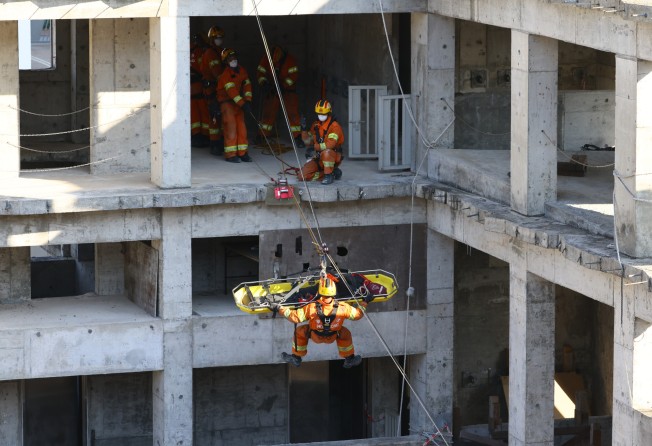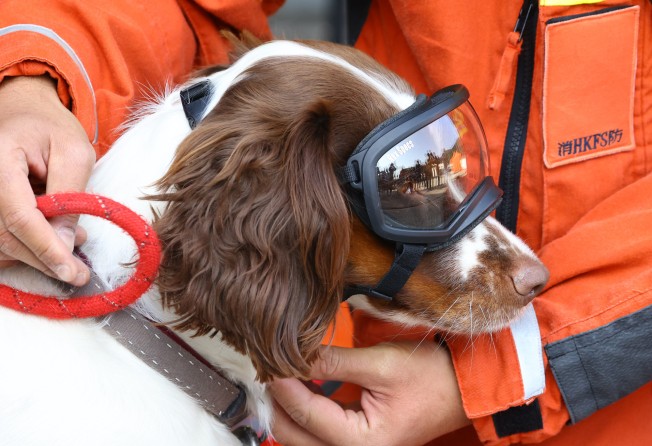
Collapsed buildings, rescue drones and survivors under rubble: Hong Kong fire services holds 36-hour drill simulating earthquake aftermath
- Operation modelled on non-local scenario and aimed at developing skills for rescue team, with members trained in handling collapses, plane crashes and traffic accidents
- Latest drill also marks first time highly advanced DJI Matrice 300 RTK drone used in urban setting

Amid the buzz of a low-flying drone circling a wreckage site in Hong Kong, groups of orange-clad men scale piles of rubble, armed with drills and concrete-cutting saws to open up a path into a collapsed building as a sniffer dog nimbly navigates the debris for trapped “victims”.
This was the scene of a high-degree simulation at the Fire and Ambulance Services Academy in Tseung Kwan O, held as part of a 36-hour drill by the Fire Services Department on Wednesday.
The exercise was modelled on the aftermath of an 8.0 magnitude earthquake, where rescuers from urban search-and-rescue teams raced against time to find survivors. Scenarios included victims trapped in elevators and collapsed blocks.

“The team will experience working round the clock and improve its ability to set up and strategise rescue missions on the spot,” academy commandant Ng Chan-leung said.
Although the last major cross-border deployment for the department was during the Sichuan earthquake in 2008, Ng said such drills simulating non-local operations were essential for developing skills, with the team’s area of work centred on building or construction site collapses, plane crashes and severe traffic accidents.

“From making sure our equipment is ready to go, to scenarios where there might be limited food, water, and electricity, this drill will train our men to work for long hours and test their ability to adapt to unfamiliar settings,” said Elkol Li Sze-yuen, a senior station officer of the rescue team.

The latest drill was also the first time that the DJI Matrice 300 RTK drone, a commercial device built for rescue operations, was used in an urban setting. A thermal imaging camera, a searchlight and a gas leak detector are attached to the drone.
“The drone can circle and film footage of the collapse site within two minutes. It can provide a real-time feed to our command post and allow us to access on-the-ground conditions,” Li said.
Within 10 minutes, the team can generate a three-dimensional map of the site based on footage collected by the drone, which makes deploying personnel and arranging logistics easier for commanders on site, according to Li.

The department started using the drone, which can fly up to 5km above sea level and carry a weight of up to 2.7kg, in mountain searches this October.
A total of 160 members from fire services, the Hong Kong Red Cross and the Civil Aid Service joined the drill, the largest in five years amid disruptions caused by the Covid-19 pandemic. The operation started at 9am on Tuesday and lasted until Wednesday night.